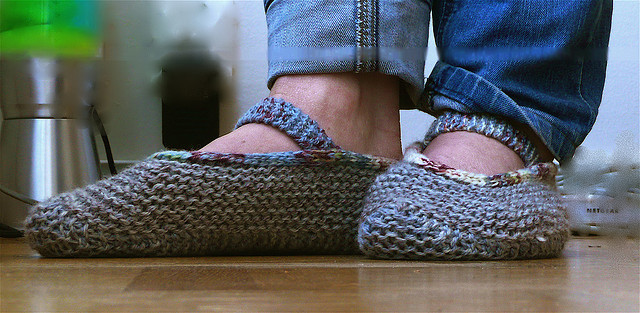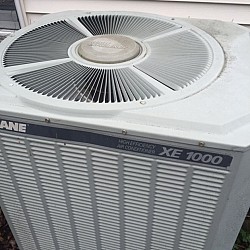5 Ways to Warm up Your Cold Floors (and Cold Feet!)
 Help! Cold floor alert! Cold floors -- and cold feet -- are a common complaint in winter, and they really are no laughing matter, especially if you count elderly relatives, small children, or pets among your household. Even if you've tried all kinds of thermal socks and fuzzy slippers, the solution might not be as simple as finding the right footwear.
Help! Cold floor alert! Cold floors -- and cold feet -- are a common complaint in winter, and they really are no laughing matter, especially if you count elderly relatives, small children, or pets among your household. Even if you've tried all kinds of thermal socks and fuzzy slippers, the solution might not be as simple as finding the right footwear.
In fact, the problem could well be your floor, especially in a room at ground level or worse yet, in the basement. Floors of ceramic, stone, or concrete are the worst culprits, with hardwood a runner-up. Luckily, there are ways to combat this chilly predicament.
- Keep Cold Air Out, Warm Air In
Start with the simplest solution, which will help provide a comfortable temperature for the whole house, not just the floor. Stop drafts and heat loss by filling any holes and cracks in the walls or between your baseboards and the floor with caulk or other sealant. In addition, install or replace the weatherstripping around your doors and windows. Make or buy a draft snake.
An excellent move is to insulate the ceiling. Hot air rises, after all, and it would be a pity to waste the warm air you are paying for your HVAC system to produce, by losing it through the ceiling.
- Insulate Underneath
When the floor is above an unheated crawl space, install insulation between the floor joists. Check periodically to make sure that it is in good shape; insects or critters occasionally get into a crawl space and wreak havoc with the insulation. Insulation may also be dislodged by the natural movement of your home settling. Avoid these problems altogether by using spray foam insulation, which is costly, but a lot more efficient than fiberglass.
Although unfinished basements are usually warmer than crawl spaces, insulating will still help to keep the floor above at a more comfortable temperature. When it comes to over-the-garage bonus rooms, insulation and sealing are essential not only to keep out the cold, but also to form a barrier against carbon monoxide. (Nevertheless, you will still need to install a CO monitor.)
- Insulate on Top
If your home is set atop a concrete slab and you're planning to have new flooring laid, first install a layer of rigid insulation. When you're not in any great hurry to replace your existing floors, a simple form of insulation is putting down area rugs in the winter. Be aware that installing wall-to-wall carpeting over an uninsulated and unheated concrete slab can be a problem due to the danger of mildew.
- Get the Best Performance from Your Heating System
Inspect and maintain your heating system on a regular basis to make sure that you are getting the best possible performance from it. Besides keeping the furnace filter, ducts, and heat registers clean, make sure that your registers are not blocked by furniture or drapes and have not become disconnected from the ductwork.
- Add Extra Heat
When you need to sit or stand in one spot for long periods -- perhaps at the desk in your home office -- a small space heater may suffice to take care of your freezing feet. Under-cabinet ("toe kick") heaters are a little more expensive but also more effective, as they blow heat across the floor. The ultimate luxury is to install underfloor radiant heating. However, this is a fairly major home improvement, which must be done by a qualified heating professional. Besides the heating itself, the project requires installation of new flooring and a dedicated 20-amp circuit.
But your feet will love it!
NOTE: If you have chronically cold feet, consult your health practitioner to rule out a medical condition such as peripheral neuropathy.
Laura Firszt writes for networx.com.
Looking for a Pro? Call us (866) 441-6648

Heating & cooling Average Costs
HVAC Contractors Experiences

A Simple HVAC Repair Stopped Our Air Conditioner Blowing Hot Air

Electrician Restarted The Lights In My Outdoor Kitchen



